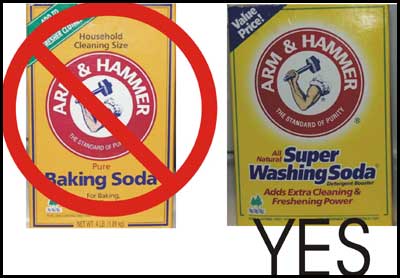Page 2 of 2
Posted: Thu Aug 17, 2006 11:54 pm
by sviennadan
George Willer wrote:Rudi,
I know it's confusing. For whatever reason electrons were arbitrarily assigned a negative potential. The electrons (negative) flow from the cathode toward the positive (anode) terminal. That's counter intuitive, but that's the convention.

In our electrolysis tanks the flow is from the work (negative: Cathode as in cathode ray tube) toward the anode (positive, with too few electrons)
I'll bet I just made it more confusing, sorry but it's been 56 years since I studied this stuff!

and to clarify....the cathode and anode are
BOTH electrodes. For further info.... check out
http://en.wikipedia.org/wiki/Electrode
Posted: Fri Aug 18, 2006 8:56 am
by Dennis B
ldj1002, Awesome link with pictures. This is exactly what I had in mind. Great ideas for the neck opening and using a coat hanger for a anode. I'm wondering why they do not use baking soda. I have used it and it works great.
Posted: Fri Aug 18, 2006 2:04 pm
by johnbron

I have thought of this tank cleaning method before BUT, I always had doubts about its thoroughness of cleaning a Baffled tank such as the Cub has. Electrolysis cleans by line-of-sight so how is the rust going to be removed from the OTHER side of the Baffle.

Posted: Fri Aug 18, 2006 2:24 pm
by George Willer
johnbron wrote::?: I have thought of this tank cleaning method before BUT, I always had doubts about its thoroughness of cleaning a Baffled tank such as the Cub has. Electrolysis cleans by line-of-sight so how is the rust going to be removed from the OTHER side of the Baffle.

Bronson,
It may be line of sight, but more likely path of least resistance. (nearly weightless electrons can turn pretty quickly).
Experience suggests that clean areas are higher resistance, so would yield their potential to more rusted areas. That suggests the areas beyond the baffle would eventially be cleaned. Does anyone have any better idea?
Posted: Fri Aug 18, 2006 5:08 pm
by John *.?-!.* cub owner
I have heard of people cleaning rust form water passages in old engiens by using a wire that is slipped inside a plastic tube or sleeve with slitts cut it in. There is enough plastic to keep it form shorting, byt the slits/nothces allow conductivity.
Posted: Fri Aug 18, 2006 9:40 pm
by ldj1002
"I'm wondering why they do not use baking soda. I have used it and it works great."
I always use baking soda. I hear the washing soda is better but I've never found any. I've also heard about using lye, detergent, salt or anything to make the water a better conductor.. I've read that is all the baking soda does. I really don't know so I'm sticking with baking soda.
I once cleaned a tank with baffles that didn't come all the way to the top. I bent the rod I put in the tank where it ran lateral past the baffle so it was sticking over all baffles. It was hard to get the rod steady enough, but it worked. As someone pointed out with resistance and all that tech stuff, it may work any way. One thing you can leave it a long time and it won't hurt the tank.
L.D.
Posted: Fri Aug 18, 2006 10:22 pm
by Rudi
Well:
A definition from Dr. Dan Berger (Faculty- Chemistry/Science dept. at Bluffton College) gives a bit of understanding regarding the primary difference between Washing Soda (Sodium Carbonate) and Baking Soda (Sodium Bicarbonate).
". . . washing soda will consume two equivalents of acid, while baking soda will only consume one equivalent."
This means that it will take twice the amount of Baking Soda, say 2 cups, to accomplish what a 1 cup of Washing Soda will do.
Simple economics I guess...
It is explained well here [url=http://650rider.com/Content/pid=6.html]Removing rust from fuel tanks and parts with electrolysis
[/url]

Posted: Fri Aug 18, 2006 10:25 pm
by Jim Becker
I couldn't find washing soda. That is why I used TSP. Since my parts are never totally clean, I thought using a detergent would do more than a salt would to loosen up any grease that is on them.
In our electrolysis tanks the flow is from the work (negative: Cathode as in cathode ray tube) toward the anode (positive, with too few electrons)
